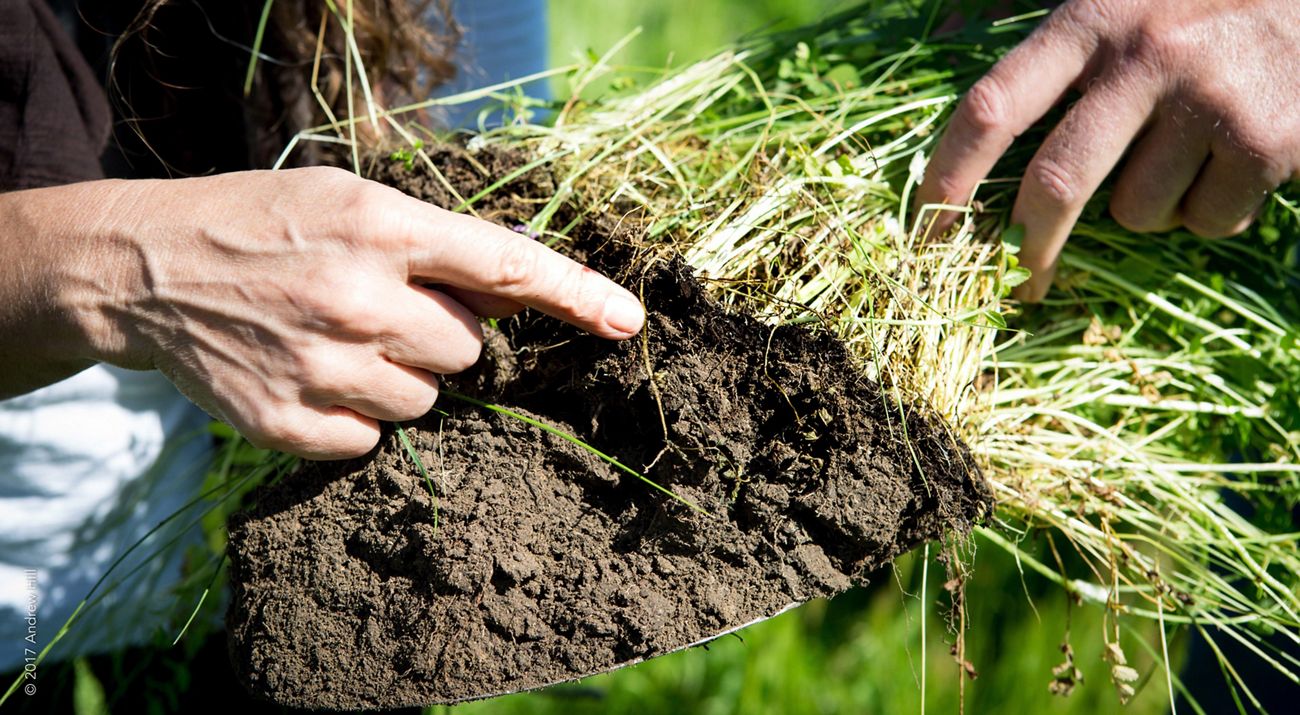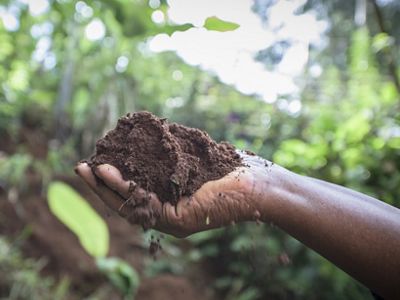Soil Management – A Foundational Strategy for Conservation
If we’re serious about the health of the planet, we’d be smart to start focusing on soil

Quote: Wendell Berry: The Unsettling of America
Soil is the great connector of lives, the source and destination of all. The healer and restorer and resurrector, by which disease passes into health, age into youth, death into life. Without proper care for it we can have no life
When we talk about conservation, most people think about protecting landscapes and wildlife and ensuring clean air and water. What they’re probably not thinking about is soil.
But soil is more than just our geological backdrop. Healthy soil means healthy landscapes and water systems—it’s the basis of all life and provides water, food, clean air, a stable climate and good health.
Since joining The Nature Conservancy a year ago, I’ve been on the road talking to many people about their soil. As a soil scientist, I’m eager to learn more about where and how we work, and also to raise the profile of one of our most important conservation strategies – how and why soil is critical for our future.
Scientists like myself focus on the biological, chemical and physical properties that make soil one of the most precious materials on Earth. We explore the ways soils are living ecosystems that support the growth of plants, filter and regulate the cycling of water, decompose and recycle materials—and store more than twice as much carbon as in the atmosphere. We are also fascinated with the complexity, what we still don’t know about soil biology and how it functions – the uncertainties, the unknowns.
But what strikes me most when I talk to people about their soil—on their farms, ranches or conservancies—is their passion. Passion to dig into the dirt and to get immersed in the creative process of restoring soils, building soil organic matter, feeding and nurturing soil biology. The places I have visited are varied geographically and culturally but all share the same need and drive to care for their soil.

All too often conservation is perceived as an activity that protects something far away—a pristine ecosystem, a river, an endangered species, or even the global climate.These things are critical, of course; yet it is when we talk about feeding our families and growing food that people realize that conservation often starts under our feet.
At the Conservancy, we recognize soil as a cornerstone of our global conservation work, crucial for protecting land and water, providing food and water sustainably, and addressing climate change. But while we have been implementing programs that improve soil – through vegetation restoration, wetland construction, cover cropping, terracing and more to achieve conservation—for the most part soil science and management have not been a primary focus of our conservation attention.
With the launch of our Global Soil Initiative we are starting to connect more of the dots on the role soils play in our work. The connection between soil and climate is perhaps the area of this work receiving the most public interest.Climate change is a global problem, and it requires solutions on a global scale. Our lands provide an untapped opportunity through a set of natural climate solutions – proven ways of both storing carbon and reducing carbon emissions in the world’s forests, grasslands and wetlands. At the same time the UN Sustainable Development Goals (SDG’s) call out the importance of soil for sustainable agriculture, food and nutrition security, and restoration of terrestrial ecosystems.
Speaking to a group of soil scientists, climate scientists, activists and farmers outside of Paris this May, Christiana Figueres, former Executive Secretary of the United Nations Framework Convention on Climate Change (UNFCCC) noted the “happy coincidence” that drawing down carbon into soil benefits both the atmosphere and the local farmer, saying that carbon in the soil is a very good proxy for the health of the land, and carbon in the atmosphere is a very good proxy for the planet’s lack of health.

In fact, better soil management can create all sorts of “happy coincidences.” Protecting soils from erosion is a significant part of our water funds work, a well-established strategy for protecting the quality of the water for downstream users. But in addition to preventing runoff, we can also actively build the health of farm soil through practices such as composting, cover cropping and crop diversification. All of these practices will regenerate soil organic matter, increase farm productivity and farmer income.
Kenya offers another such example. The Northern Rangelands Trust partnership is working to make changes in rangeland management to increase soil carbon, leverage carbon markets and provide revenue for community rangeland trusts. In Northern Kenya, rangelands are managed mainly through the types of grazing animals, the density at which they are grazed, and the frequency by which they are rotated to other parts of the system to avoid overgrazing. These healthier, better-managed grasslands sequester more carbon from the atmosphere provide better habitat for wildlife and better pasture for livestock.

Investing in our soils is a strategy with massive untapped potential—potential we can realize if we start thinking holistically about what kind of interventions and policies are needed from top down and ground up. If we’re to deliver on our changing food needs, sustain global health, end poverty and beat climate change, then soil is our unrecognized hero. Isn’t it about time we did more?
